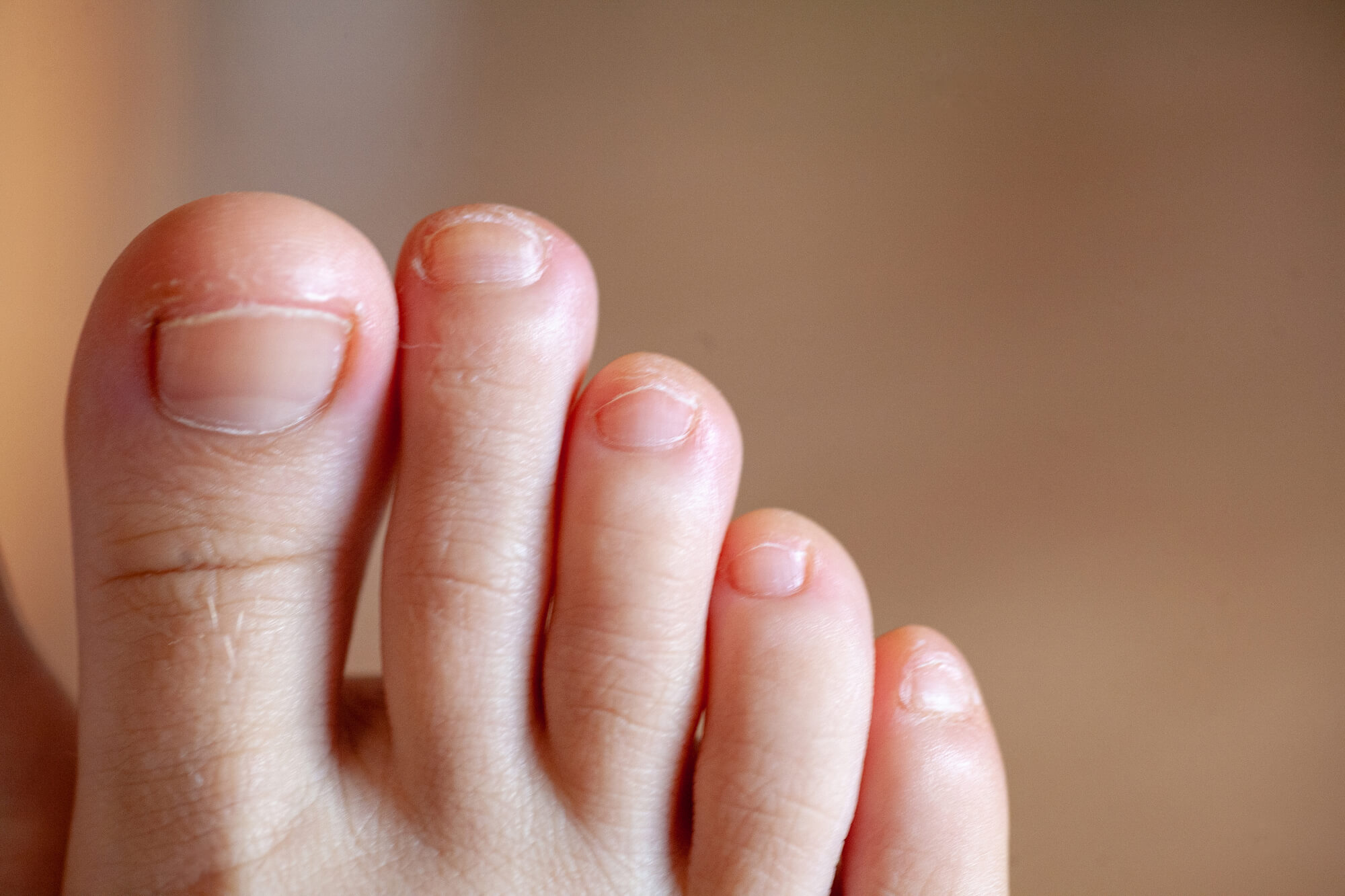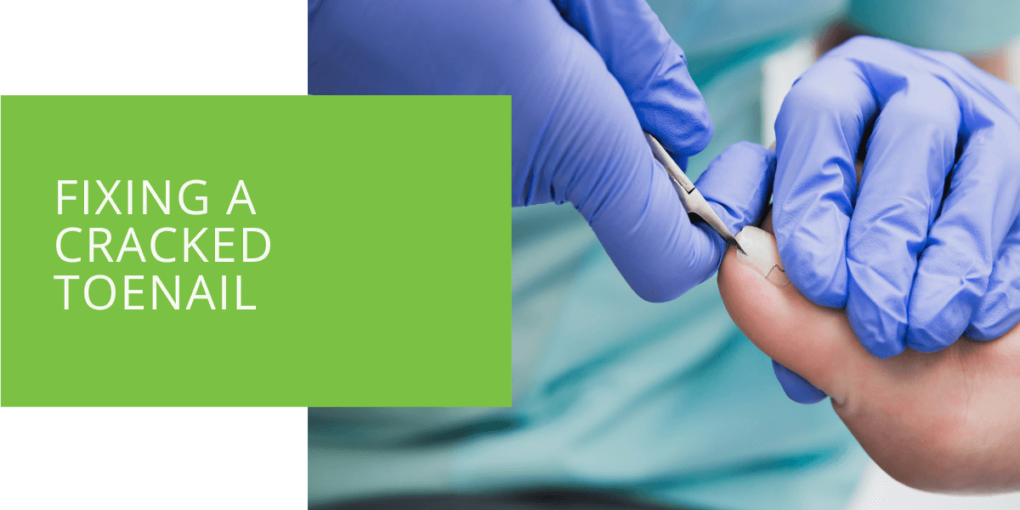Fixing a Cracked Toenail
Cracked toenails can be a frustrating and sometimes even painful issue to deal with. Whether caused by trauma, fungal infections, or simply dry and brittle nails, they can cause discomfort and affect the overall appearance of your feet. At our podiatry clinic, we understand how important it is to take care of your feet and maintain their health and beauty. We've created this comprehensive guide to help you understand, treat, and prevent cracked toenails effectively.
Our expert podiatrists have meticulously prepared this guide to provide you with everything you need about cracked toenails. We've covered you, from the various causes and symptoms to the best treatments and preventative measures. We'll help you identify the underlying causes of your cracked toenails and offer practical, evidence-based solutions to help you achieve healthy, beautiful nails. With our help, you can say goodbye to cracked toenails and enjoy the confidence and comfort of healthy feet.
Key Takeaways
- Properly understanding the causes and types of cracked toenails is essential for effective treatment and prevention.
- When faced with severe cracks, infections, or excessive bleeding, seeking immediate medical attention from a podiatrist is crucial.
- Preventing future toenail cracks involves maintaining good nail care practices, recognizing early signs of trouble, and choosing appropriate footwear and nail products.
Understanding Cracked Toenails
What Causes Cracked Toenails
Various factors can trigger cracked toenails, and understanding these root causes is crucial for effective management.
- Trauma, Injury, or Accidents: Stubbing your toe, dropping heavy objects on it, or even wearing ill-fitting shoes can subject your toenails to trauma. This physical stress may lead to cracks.
- Fungal Infections: Nail fungal infections can weaken the nail structure over time. Weakened nails are more prone to cracking.
- Nail Dehydration: Nails can become dehydrated due to prolonged exposure to water or harsh chemicals like nail polish removers. Dehydrated nails lose their natural flexibility, making them brittle and prone to splitting.
- Structural Issues: Some individuals have naturally brittle nails or other underlying conditions predisposing them to toenail cracks.
Assessing the Severity of the Cracked Toenail
Identifying Different Types of Cracks
Cracks in toenails manifest in various forms, each with implications and treatment approaches.
- Vertical Splits: These cracks typically run from the tip of the nail down toward the nail bed. They often result from minor injuries or dehydration and can be managed properly.
- Horizontal Splits: While less common, horizontal splits can indicate underlying health issues such as psoriasis or other skin conditions. These cracks should prompt a closer examination.
- Complete Nail Detachment: In severe cases, the entire nail may detach from the nail bed, causing significant pain and discomfort. Such cases necessitate immediate medical attention.
When Does It Require Medical Attention
While many cases of cracked toenails can be managed at home, certain signs should prompt you to seek professional medical care.
- Signs of Infection: If you observe redness, swelling, pus, or increased pain around the cracked nail, it may signify an infection. Prompt medical attention is essential to prevent complications.
- Excessive Bleeding or Pain: Deep and widespread cracks can lead to excessive bleeding and intense pain. These are indicators that require evaluation by a healthcare provider.
Home Remedies for Treating Mild Cracked Toenails
Soak and Moisturize
Discover effective home remedies to alleviate discomfort and promote healing for mild cases of cracked toenails.
- Epsom Salt Foot Soaks: Soaking your feet in warm water with Epsom salt for 15-20 minutes softens the nails and surrounding skin. This can ease pain and aid in healing. After soaking, pat your feet dry and apply a moisturizing cream.
- Applying Nail Oil or Cream: Regularly moisturize your toenails to maintain hydration. This prevents them from becoming brittle and vulnerable to splitting.
Trimming and Filing
Proper nail maintenance techniques are essential to prevent further damage.
- Proper Nail Trimming: Trim your toenails straight across to prevent ingrown toenails. Avoid rounding the edges, as this can reduce the risk of future splits.
- Filing: Use a gentle nail file to smooth jagged edges without causing further harm to the nail. This promotes comfort and prevents snagging.

Protective Measures
Taking precautions can help you avoid future cracks and maintain healthy toenails.
- Wearing Open-Toed Shoes: Open-toed or well-ventilated shoes allow your toenails to breathe, reducing the risk of moisture-related issues and fungal infections.
- Avoiding Tight Footwear: Tight shoes exert pressure on your toenails, potentially causing cracks. Ensure your boots provide ample room for your toes to move comfortably.
- Keeping Nails Clean and Dry: Maintaining proper nail hygiene is vital. Keeping your toenails clean and dry helps prevent fungal infections that weaken the nails.
Over-the-Counter Treatments
Using Nail Repair Kits
Explore over-the-counter solutions for minor toenail cracks.
- How They Work: Nail repair kits typically contain adhesive and reinforcing materials. These materials bond the cracked nail, offering temporary relief while the nail grows out.
- Tips for Effective Use: Follow the instructions provided with the nail repair kit carefully. Proper application is crucial for the best results.
Topical Antifungal Solutions
For toenail cracks related to fungal infections, consider topical antifungal treatments.
- When Applicable: Topical antifungal solutions can be effective if your cracked toenail is linked to a fungal infection. Use them as directed on the product packaging.
- Application Instructions: Apply the antifungal solution according to instructions to combat the underlying infection effectively.
Medical Treatment Options
Consulting a Podiatrist
When in doubt, seek professional evaluation and guidance from a podiatrist.
- Importance of Professional Evaluation: Podiatrists are specialists in foot and toenail health. They can assess the severity of your cracked toenail and recommend a customized treatment plan tailored to your specific needs.
- Customized Treatment Plans: Your podiatrist may suggest specific treatments or procedures based on the underlying cause and the extent of the damage to ensure optimal healing and recovery.
Surgical Interventions
Surgical intervention may sometimes be necessary to address severe toenail issues.
- Nail Removal Procedures: In severe cracks or fungal infections, partial or complete nail removal may be required to allow healthy nail regrowth.
- Nail Grafting: Nail grafting procedures can help restore the appearance and function of the toenail in instances of extensive damage.
Preventing Future Cracks
Proper Foot Care Habits
Adopt and maintain healthy nail care practices to prevent future toenail issues.
- Trimming Nails Correctly: Regularly trim your toenails straight across to reduce the risk of ingrown toenails and splits.
- Keeping Nails Hydrated: Use nail care products with moisturizing properties to keep your nails properly hydrated, promoting flexibility and strength.
- Wearing Appropriate Footwear: Choose footwear that provides adequate support and sufficient room for your toes to prevent undue pressure on the nails.
Nail Health Tips
Additional insights for maintaining optimal nail health:
- Avoiding Excessive Nail Polish: Limit nail polish and nail polish removers, as they can dehydrate the nails over time.
- Choosing Breathable Nail Products: When using nail polish, select products that allow your nails to breathe, minimizing the risk of dehydration and brittleness.
- Recognizing Early Signs of Trouble: Be vigilant about changes in your toenails. If you notice any abnormalities or concerning symptoms, seek prompt medical attention to address potential issues.
Conclusion
Cracked toenails can range from minor inconveniences to serious medical concerns. It's essential to be well-informed about how to treat and prevent cracked toenails effectively.
Our podiatrists possess extensive experience in diagnosing and treating toenail problems. If you are uncertain how to address your cracked toenail or suspect an underlying issue, do not hesitate to schedule an appointment with us.
Remember, practicing good nail care habits and promptly seeking medical attention when necessary are the keys to preventing and managing cracked toenails. Your feet are vital to your overall well-being, so ensure they receive the care they deserve. Take the first step towards healthier toenails by scheduling an appointment today!

